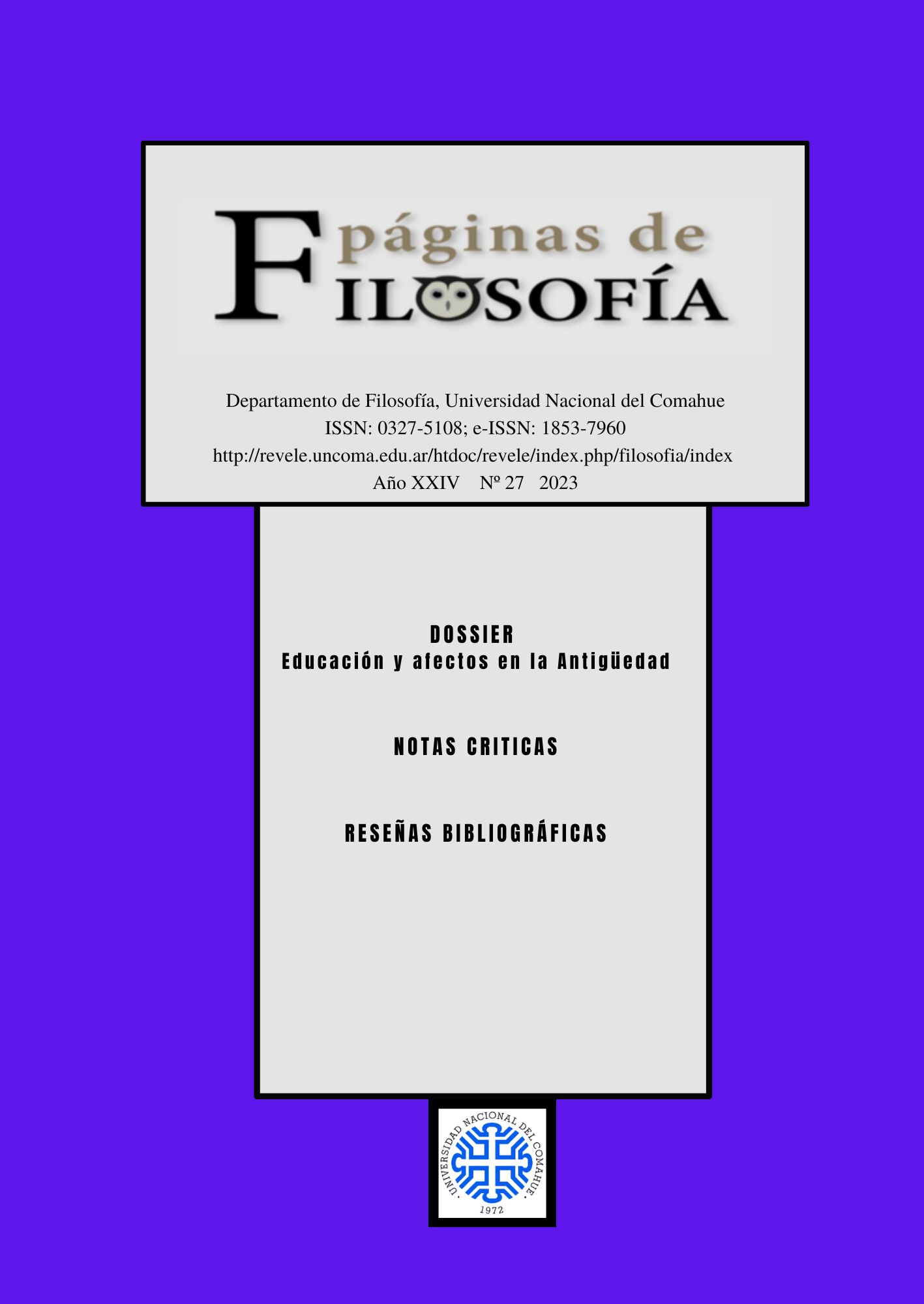Poetic Emotions: Compassion In Sophocles
Keywords:
Sophocles, Pathos, Compassion, Women of TrachisAbstract
Within the framework of studies on emotions, in this work we address compassion in Greek Antiquity. We carry out a review of central aspects that characterize compassion and establish some clarifications that guide our analysis; among other aspects, we look over the Greek terms to name this emotion, éleos and oíktos, and the meanings involved in each of them since Homer. The analysis of compassion takes Sophocles' Trachiniae and Oedipus the King as sources. In both cases, the starting point is the pathetic event or páthos, which in Poet. 1452b11-13 refers not to a subjective experience of emotion in a tragic character, but to a kind of action that would form part of the theatrical lexicon and that involves scenes of physical pain, wounds, or death. The analysis then looks at other passages that, in the course of the piece and through imitation, incorporate this emotion.
Downloads
References
Barnes, J. (ed.) (1995). “Rhetoric and Poetics” en The Cambridge Companion to Aristotle, Cambridge: University Press: 259-285.
Berzins McCoy, M. (2014). “Pity as a Civic Virtue in Sophocles’ Philoctetes” en Wonded Heroes: Vulnerability as Virtue in Ancient Greek Literature and Philosophy, Oxford: University Press: 1-22.
Cairns, D. (2021). “Homer, Aristotle, and the Nature of Compassion” videoconferencia del ciclo Sentir y emocionar(se): dimensiones de la afectividad en el mundo griego antiguo: 1-20.
Cheng, W. (2018) “Aristotle’s Vocabulary of Pain”, Philologus 163 (1): 1-25.
Dain, A. & Mazon, P. (eds.) (1960). Sophocle. París: Les Belles Lettres.
Danze, T. M. (2017). “The tragedy of pity in Sophocles’ Oedipus Tyrannus”, American Journal of Philology 137: 565-599.
García Valdez, M. (tr.) (1988). Aristóteles, Política, Madrid: Gredos.
Kassel, R. (1966). Aristotle's Ars Poetica. Oxford, Clarendon Press.
Konstan, D. (2006). “Pity” en The Emotions of the Ancient Greeks. Studies in Aristotle and Classical Literature, Toronto: University of Toronto Press: 201-218.
Konstan, D. (2020). “Aesthetic emotions” en Destrée, P. Heath, M. & Munteanu, D. L. (eds) The Poetics in its Aristotelian Context, London/New York: Routledge, 51-65.
Lloyd-Jones, H. & Wilson, N. (eds.) (1990). Sophocles fabulae, Oxford, University Press.
Lucas, D. W. (ed.) (1968). Aristotle. Poetics, Oxford: Clarendon Press.
Megino Rodríguez, C. (ed. y tr.) (2006). Aristóteles. Protréptico, Madrid: Abada.
Obrist, K. (2020). “Heracles y Edipo: la exhibición de cuerpos mancillados en el teatro de Sófocles” en Atienza, A., Rodríguez Cidre E. & Buis E. J. (eds.), Anatomías poéticas. Pliegues y despliegues del cuerpo en el mundo griego antiguo, Buenos Aires: Editorial de la FFyL/UBA: 353-390.
Prauscello, L, (2008). “The language of pity: eleos and oiktos in Sophocles’ Philoctetes”, Cambridge Classical Journal 56: 199-212.
Racionero, Q. (tr.) (1994). Aristóteles, Retórica, Madrid: Gredos.
Sandridge, N. B. (2008). “Feeling vulnerable but not too vulnerable: Pity in Sophocles’ Oedipus Coloneus, Ajax and Philoctetes”, Classical Journal 103.4: 433-448.
Scodel, R. & Caston, R. (2019). “Literature” en Cairns, D. (ed.), A Cultural History of the Emotions in Antiquity, Londres: Bloombusry: 109-124.
Sinnott, E. (tr.) (2007). Aristóteles, Poética, Buenos Aires: Colihue.
Vernant, J. P. & Vidal Naquet, P. (2002). “Ambigüedad e inversión. Sobre la estructura enigmática del Edipo Rey”, Mito y Tragedia en la Grecia antigua, Volumen I, Barcelona: Paidós: 103-135.
Downloads
Published
How to Cite
Issue
Section
License
Copyright (c) 2024 Páginas de Filosofía

This work is licensed under a Creative Commons Attribution-NonCommercial-ShareAlike 4.0 International License.




